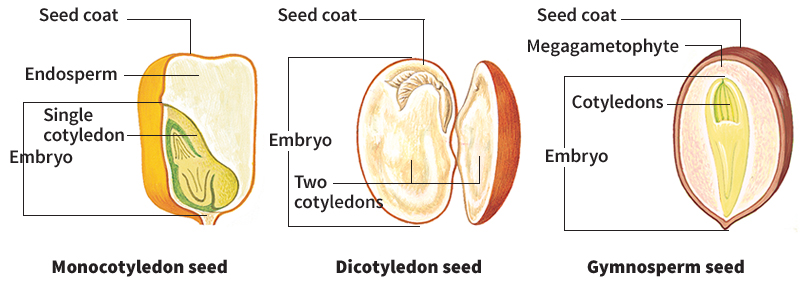Cotyledon, << `kot` uh LEE duhn, >> is the leafy portion of a plant’s embryo. The embryo is the part of the seed from which a mature plant develops. It consists of a radicle (short root) and a plumule (short bud), connected by a hypocotyl (short shoot) that bears one or more cotyledons. Because they form within seeds, cotyledons also are known as seed leaves. If a peanut is split apart, the two halves are the cotyledons. The remaining parts of the peanut embryo can be seen where the cotyledons are attached to the embryonic stem.

Flowering plants, called angiosperms, have embryos with one or two cotyledons. Those with one cotyledon are known as monocotyledons or monocots. Monocots include bananas, pineapples, and corn. Angiosperms with two cotyledons are called dicotyledons or dicots. Beans, squashes, and tomatoes are common dicots. Gymnosperms (nonflowering seed plants) have embryos with two or more cotyledons, depending on the type of plant. Such needleleaf, cone-bearing trees as pines and hemlocks are gymnosperms.
Cotyledons have various functions. In some seeds, such as those of cereal grains, the cotyledon absorbs stored food from the endosperm (food storage tissue) of the seed. In other seeds, including those of peas and beans, the stored food is first absorbed by the developing embryo and then deposited in the fleshy cotyledons. When the seed of a pea sprouts, the cotyledons remain underground. In beans, however, the cotyledons appear above the ground and function briefly in photosynthesis (see Photosynthesis). Other cotyledons, such as those of morning-glories, resemble regular leaves in appearance and function.
